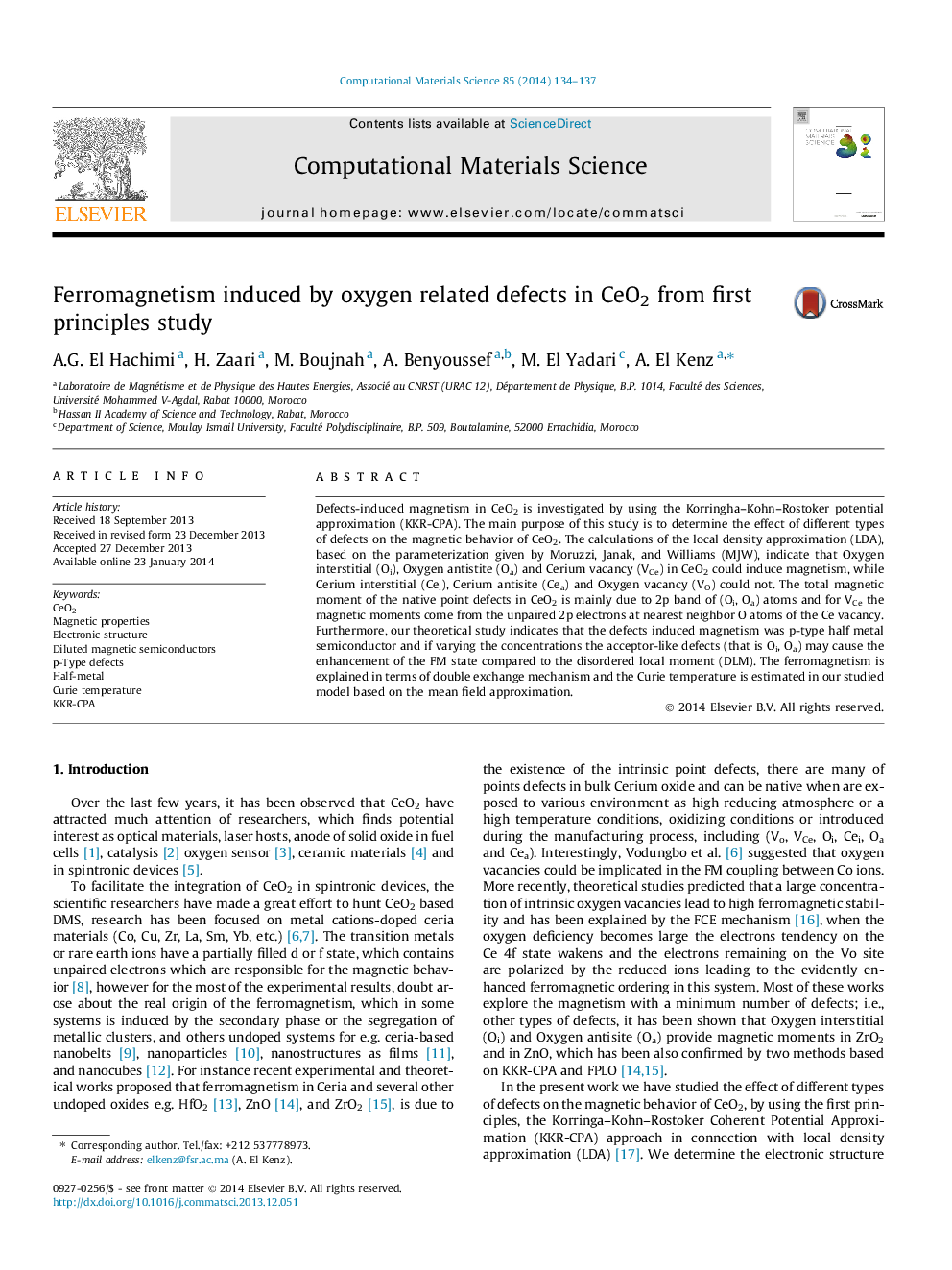| Article ID | Journal | Published Year | Pages | File Type |
|---|---|---|---|---|
| 1560984 | Computational Materials Science | 2014 | 4 Pages |
•Oxygen interstitial, Oxygen antistite and Cerium vacancy in CeO2 induced magnetism.•Cerium interstitial, Cerium antisite and Oxygen vacancy in CeO2 did not induce magnetism.•The defects induced magnetism was p-type half metal semiconductor.
Defects-induced magnetism in CeO2 is investigated by using the Korringha–Kohn–Rostoker potential approximation (KKR-CPA). The main purpose of this study is to determine the effect of different types of defects on the magnetic behavior of CeO2. The calculations of the local density approximation (LDA), based on the parameterization given by Moruzzi, Janak, and Williams (MJW), indicate that Oxygen interstitial (Oi), Oxygen antistite (Oa) and Cerium vacancy (VCe) in CeO2 could induce magnetism, while Cerium interstitial (Cei), Cerium antisite (Cea) and Oxygen vacancy (VO) could not. The total magnetic moment of the native point defects in CeO2 is mainly due to 2p band of (Oi, Oa) atoms and for VCe the magnetic moments come from the unpaired 2p electrons at nearest neighbor O atoms of the Ce vacancy. Furthermore, our theoretical study indicates that the defects induced magnetism was p-type half metal semiconductor and if varying the concentrations the acceptor-like defects (that is Oi, Oa) may cause the enhancement of the FM state compared to the disordered local moment (DLM). The ferromagnetism is explained in terms of double exchange mechanism and the Curie temperature is estimated in our studied model based on the mean field approximation.
